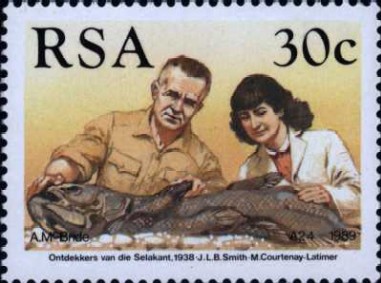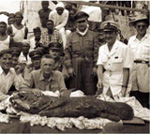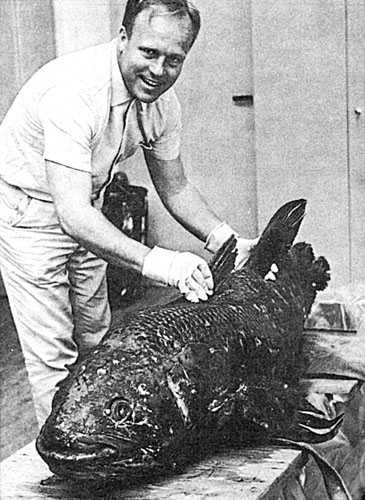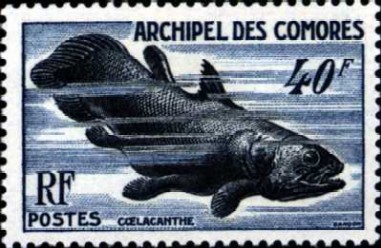
July 24, 2009

Guest mini-blogger Jerome F. Hamlin, founder of Dinofish, speaking from outside of cryptozoology, shares his questions, which appear grounded in some culturally-based confusion with Cryptomundo today.

The coelacanth, one of the cornerstones of cryptozoology, falls into the special class of animals that are not rumored to exist and then confirmed by science, such as Nessie or Bigfoot might hopefully be, but that are not even thought about until they suddenly pop into our awareness. The megamouth shark or the new species of bat found in the Comoros, are other examples of this class.

But beyond this, was the coelacanth really even famously discovered in 1938 by Marjorie Courtenay-Latimer and JLB Smith? By this question, I’m not referring to possible earlier claims of discovery, but to the fact that the fish was well known by another name (Gombessa) for hundreds of years in the Comoros! Further, the Indonesian coelacanth was also previously known to Indonesian fishermen, supposedly by the name, Rajah Laut-“King of the Sea.”
So the term “discovery” in these cases is being used Eurocentrically to refer to discovery by Westerners or Western science. Only in the cases of the Sodwana, South African coelacanths- discovered by Tri mix SCUBA divers or the recent Tanzanian catches resulting from a shift in fishing techniques, has the coelacanth actually been discovered in places where it did not go by another name. These, indeed, are discoveries.
What say you?

I think Hamlin raises pretty much of a red herring, (no pun intended, regarding coelacanths, of course), as the formal definition of cryptozoology acknowledges that cryptids are regularly ethnoknown first, that’s what local and native sightings are all about, and that it is Western science that is verifying a “new species.”
But I thought I would share it here, as others may have some thoughts on this point. ~ Loren

“The coelacanth (Latimeria chalumnae) is the darling of cryptozoology, a true living fossil. Its story demonstrates that unknown, undiscovered, or at least long-thought-extinct animals can still be found – especially in the oceans.” – – from The Field Guide to Lake Monsters, Sea Serpents, and Other Mystery Denizens of the Deep .

About Loren Coleman
Loren Coleman is one of the world’s leading cryptozoologists, some say “the” leading living cryptozoologist. Certainly, he is acknowledged as the current living American researcher and writer who has most popularized cryptozoology in the late 20th and early 21st centuries.
Starting his fieldwork and investigations in 1960, after traveling and trekking extensively in pursuit of cryptozoological mysteries, Coleman began writing to share his experiences in 1969. An honorary member of Ivan T. Sanderson’s Society for the Investigation of the Unexplained in the 1970s, Coleman has been bestowed with similar honorary memberships of the North Idaho College Cryptozoology Club in 1983, and in subsequent years, that of the British Columbia Scientific Cryptozoology Club, CryptoSafari International, and other international organizations. He was also a Life Member and Benefactor of the International Society of Cryptozoology (now-defunct).
Loren Coleman’s daily blog, as a member of the Cryptomundo Team, served as an ongoing avenue of communication for the ever-growing body of cryptozoo news from 2005 through 2013. He returned as an infrequent contributor beginning Halloween week of 2015.
Coleman is the founder in 2003, and current director of the International Cryptozoology Museum in Portland, Maine.
Filed under Classic Animals of Discovery, Cryptomundo Exclusive, Cryptotourism, CryptoZoo News, Cryptozoology, Expedition Reports, New Species, Year In Review